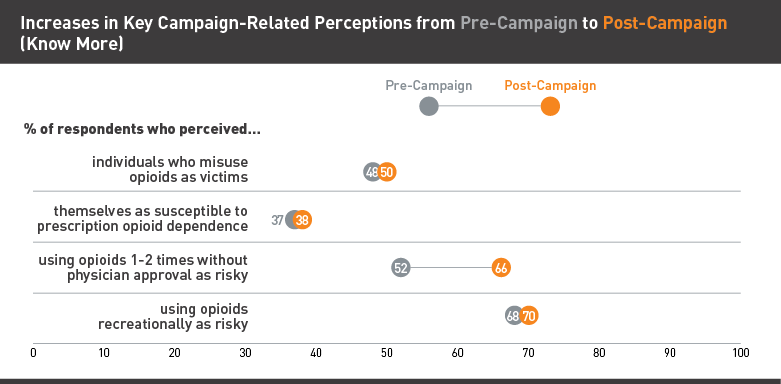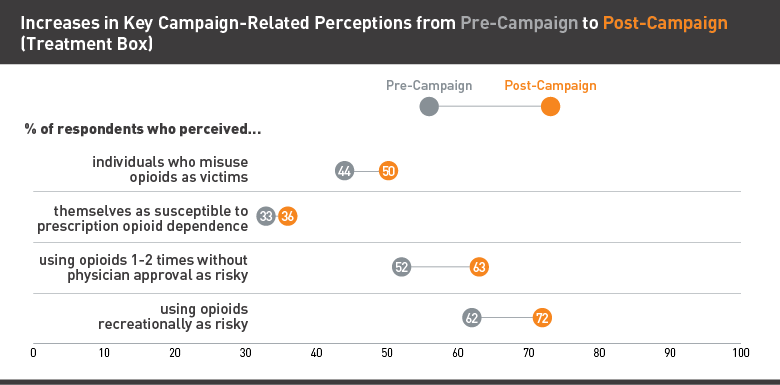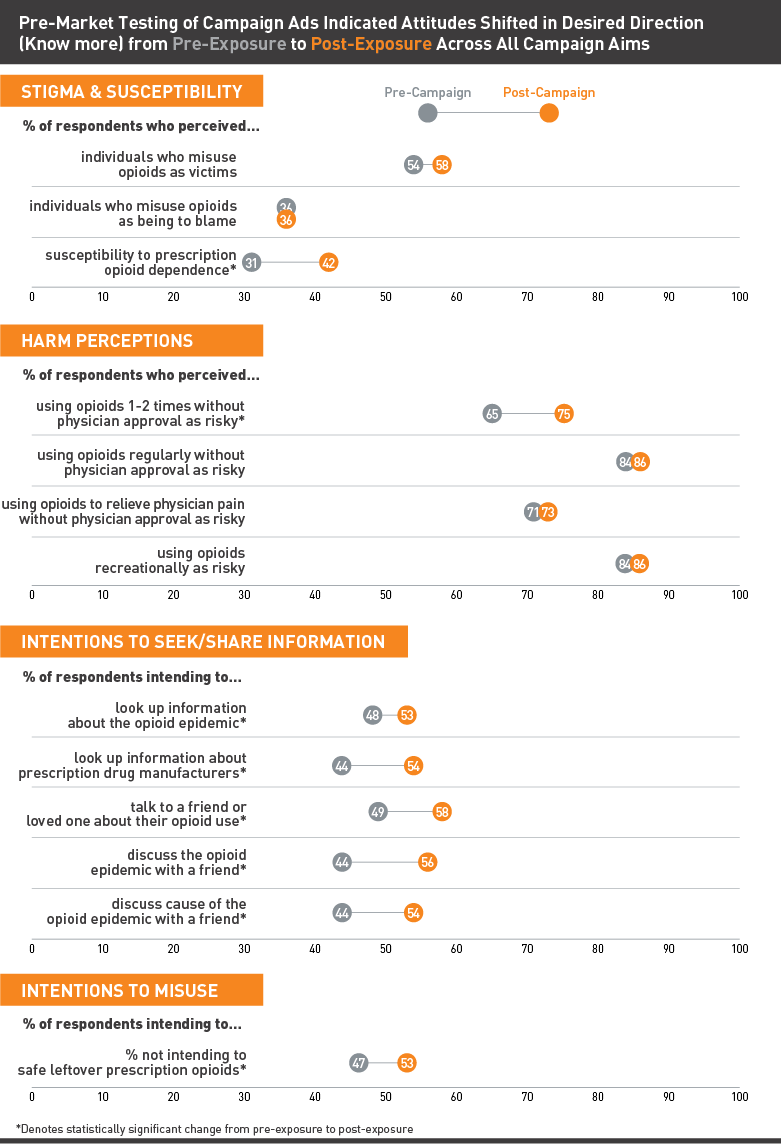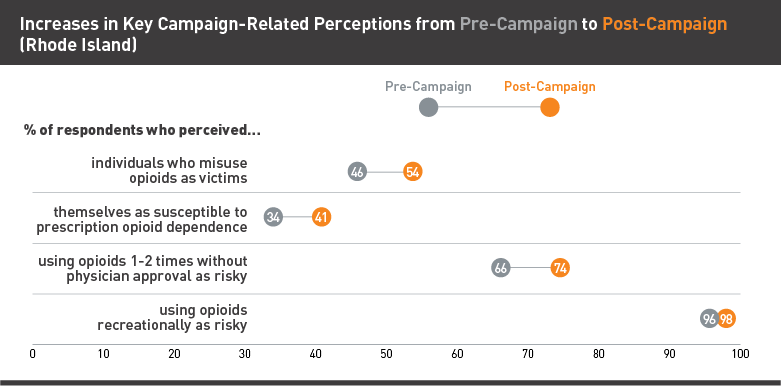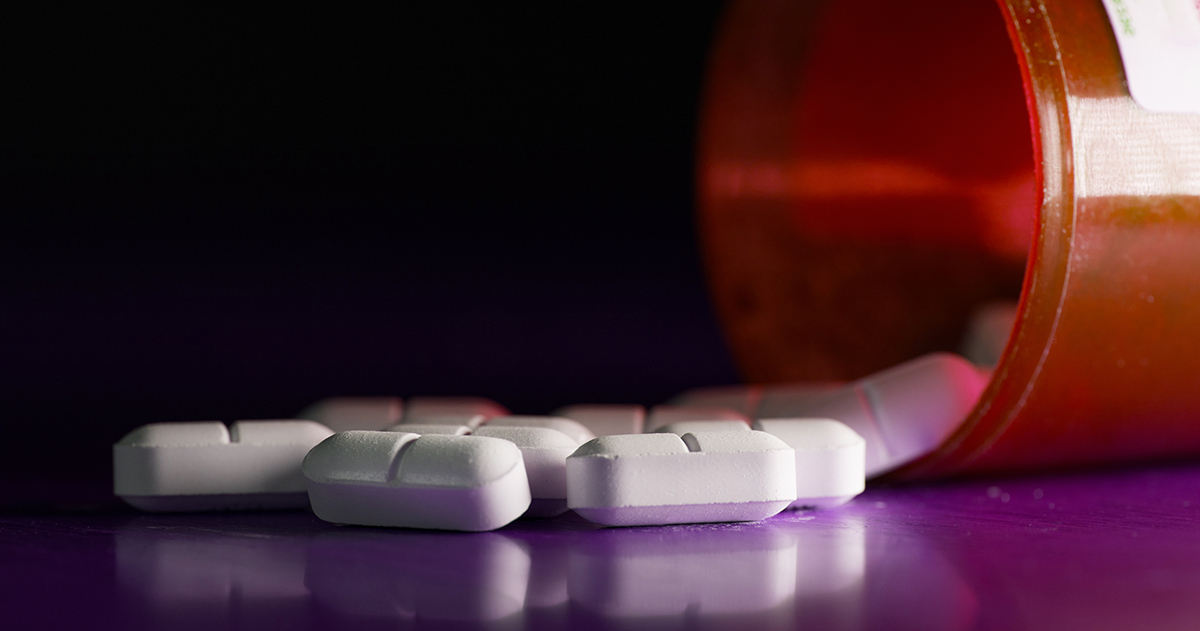
The truth about opioids
A truth® public education and prevention campaign is helping young people understand the dangers of opioid misuse
The Truth About Opioids, a nearly three-year-long effort from Truth Initiative to contribute its youth prevention and education expertise to combatting America’s opioid misuse epidemic, is helping young people understand the facts about opioids, the risk of addiction and the crucial role they can play in solving the crisis within their communities. Evaluations of the campaign show shifts in young people’s knowledge and attitudes about the dangers of opioid misuse and around opioid use disease stigma, underscoring the importance of public education and prevention — alongside emergency response, treatment and recovery — in the comprehensive effort to combat the epidemic.
Young Americans are especially vulnerable to misunderstanding the risks associated with opioid misuse, addiction, and the dangerous spiral down from prescription to illicit use. An estimated 1,300 young adults misused an opioid prescription for the first time each day in 2018 and overdose deaths in the U.S. continue to climb after reaching record numbers in 2019, exacerbated by the COVID-19 pandemic. Truth Initiative began confronting this crisis in 2018 because of its record of success in tobacco prevention — the organization has prevented over 3 million youth and young adults from smoking since 2000 and helped bring the youth cigarette use rate down from 23% in 2000 to a historic low of 3.7% in 2019 — and the recognition and credibility of the truth brand, which has nearly 80% awareness among young people.
Truth Initiative developed The Truth About Opioids using its proven-successful tobacco prevention strategy — giving young people the facts and empowering them to make their own decisions — based on formative research and rigorous evaluation. Research that found a significant knowledge gap about opioids and their risks, as well as a desire among young people to be part of a solution, guided the campaign’s focus on achieving key outcomes: increasing awareness of the risk of misuse, decreasing stigma of addiction to help young people understand it can happen to them, and driving them to seek and share more information. The campaign, which featured a series of different messages, was rigorously tested both before messages were placed in market and in national and focused local markets after airing. The pre- and post-market evaluations of different components of the campaign show that it is achieving these key outcomes among its target audience:
- Increasing opioid misuse awareness: The campaign drove a 46% increase in those who strongly agreed that opioid dependence can happen in just five days among young people who engaged with the campaign and a 27% decrease in those who strongly agreed with the statement “If I got a prescription opioid from a doctor, I would share some with my friends.” Nearly three-quarters (73.7%) of youth and young adults perceived using opioids without a prescription even once or twice as “high risk,” an increase from 66%.
- Decreasing stigma: There was a 36% increase in those who strongly agreed that anyone can become addicted to prescription opioids and a 20.6% increase in the number of young people who said someone like them could become dependent on prescription opioids.
- Prompting intentions to seek and share information: Young people were 600% more likely to search for the terms “opioid epidemic” and the campaign tagline, “know the truth” after seeing the campaign. There was a 20.4% increase in those who reported intending to talk to a friend or loved one about their opioid use and an 11.5% increase in those who intended to look up information about the opioid epidemic.
The campaign has also received recognitions for its creativity and effectiveness, including an Emmy award. This report details the development, evaluation, and future of the campaign.
Methodological approach
Researchers identified specific knowledge, attitudes, and behaviors the campaign would target to destigmatize opioid addiction and increase risk perceptions to compel young people to change their attitudes and behavior. Using cross-sectional quantitative data, researchers assessed which constructs could move in the desired direction and were associated with the ultimate goal of reducing opioid misuse.
Campaign Aims
DOWN - Stigma around opioid dependence
UP - Risk and harm perceptions for misuse
DOWN - Intentions to share or misuse opioids
UP - Willingness to get and share information about opioids and the epidemic
1. THE FORMATIVE RESEARCH
Truth Initiative conducted extensive research prior to forming a plan for a campaign to prevent opioid addiction, including in-depth expert reviews, focus groups, surveys, and message testing with over 6,000 youth and young adults. The findings helped focus the campaign on raising anti-stigma sentiment, increasing awareness of risk perceptions for misuse, driving young people to seek more information about the opioid epidemic, and ultimately decrease intentions to share or misuse. The campaign is aimed at casual, recreational users, the segment of the population that needed more communication about the risks of opioid abuse as opposed to those who are in urgent need of treatment. This decision reflected the understanding that public education messaging would be more valuable in preventing opioid use behavior versus the more direct and intensive communication tools that might be useful with those already suffering from opioid use disorder.
The Truth About Opioids messages were carefully designed to maximize connection to the target audience of young people and created to shift key attitudes, knowledge, and behaviors. The campaign employed research-recommended strategies, including:
- Incorporating true narratives and the fact that dependence can happen to anyone to convey both magnitude of harm and likelihood of target population experiencing the threat;
- Utilizing vivid language and sound effects to underscore the dangers of addiction, increasing perceptions of the severity of a health threat;
- Using true stories of everyday people to emphasize the similarities between victims of a health threat and the target audience to increase perceptions of susceptibility; and
- Having a clear call to action around knowing and learning more and providing a simple mechanism by which to do so (i.e., visiting the thetruth.com/opioids), thus increasing the audience’s belief they can perform the recommended response.
Based on the recommendations of experts interviewed and lessons learned from failed drug PSAs of the past, the campaign took a balanced approach – avoiding over-exaggerating or demonizing addiction and taking a sympathetic, peer-to-peer approach so that audience members could empathize with those featured in the ads. Instead of leaving the viewer with a sense of defeat or hopelessness, the campaign sought to inspire a call to action, spread accurate information about addiction and treatment, and prevent young people from engaging in risky opioid use.
Using research to inform the campaign
Truth Initiative completed a rigorous and comprehensive set of research activities to inform its entry into opioid prevention.
INTERVIEWS
A range of experts — from treatment and recovery specialists to addiction researchers to health communication experts - as well as current users, those in recovery, and young people aware of the opioid crisis, were interviewed.
QUALITATIVE TESTING
Online discussion boards tested initial creative ideas among the target audience to understand who they perceive is to blame for the epidemic and what potential solutions might be.
RESEARCH STUDIES
Surveillance studies were conducted to understand the scope of the problem and over 150 attitudinal messages were tested to identify those related to opioid use outcomes and with room to be shifted in the desired direction.
QUANTITATIVE TESTING
Animatics and story boards were tested to help narrow down concepts, selecting those with highest receptivity and effectiveness in conveying an anti-opioid message.
FACTS TESTING
33 different opioid-related facts were tested through surveys and in-person focus groups for their ability to capture attention, convey new information, and motivate action.
PRE-MARKET TESTING
Near final versions of ads were tested to optimize ads prior to airing based on effectiveness in conveying the intended message and shifting key opioid-related knowledge, attitudes, and beliefs.
2. THE MESSAGE STRATEGY
After a year of extensive research, partnership development, and market-testing, the first series of messages from The Truth About Opioids campaign debuted in 2018, depicting a unique, extreme, and rapid escalation from casual prescription opioid use to life-changing dependence that can happen after just five days. The messages brought the idea to life with real, yet tragic stories of individuals whose innocent introduction to opioids quickly spiraled into out-of-control addiction. In line with research that recommends that fear appeal messaging provide specific, directed actions, each story ends with a clear call to action: “know the truth, spread the truth” and directs viewers to the truth opioids website for more information and a treatment locator.
Subsequent messages were designed to bring young people face to face with the unseen struggle of opioid addiction, withdrawal, and treatment and demonstrate that opioid dependence can happen to anyone after just five days. One campaign installment, Treatment Box: Rebekkah’s Story, uniquely brought one young woman’s detox and recovery experience to life through a life-sized installation in New York City which broadcast her journey in real-time. By presenting young people with the part of the epidemic they had never seen up close addiction — this ad aimed to reduce stigma toward people facing addiction and change young people’s perceptions around how likely — and how harrowing — addiction could really be. The latest installment of The Truth About Opioids campaign used a backdrop of typical high school celebratory moments (a graduation party, senior night, getting a college athletic scholarship) to tell emotional stories of how even the brightest futures can take a very different turn due to opioids.
3. DONATED MEDIA, NATIONAL IMPLEMENTATION STRATEGY AND RESULTS
The Truth About Opioids was implemented on a dual national and local level. Beginning in June 2018 and powered entirely by donated media, Truth Initiative’s multi-channel campaign leveraged digital platforms, social media, and television to connect with young people across the country in the places they love to scroll, tap, and watch content. Together with the Ad Council, Truth Initiative tapped companies like Google, Facebook, Snapchat, Instagram, NBCUniversal, Viacom and Turner to contribute an estimated $25.9 million in donated media, fueling the effort to reach youth and young adults across the nation. Press coverage amplified the campaign’s reach, with 1,060 earned media placements resulting in 700+ million impressions in the first week after launch. The national effort ran for 13 months and yielded positive results, evidenced by a nationwide continuous tracking study and by tracking video views and online engagement.
- The campaign drove a 46% increase in those who strongly agreed that opioid dependence can happen in just five days among young people who engaged with the campaign and a 27% decrease in those who strongly agreed with the statement “If I got a prescription opioid from a doctor, I would share some with my friends.” There was also a 36% increase in those who strongly agreed that anyone can become addicted to prescription opioids.
- Young people were 600% more likely to search for the terms “opioid epidemic” and the campaign tagline, “know the truth” after seeing the campaign.
- The campaign shifted key knowledge and attitudes around risk perception and taking action, as well as receptivity (“This ad captures my attention”), relevancy (“This ad is relevant for my generation”), credibility (“The message is believable”), and branding (whether the respondent recalled the truth brand).
The campaign also drove over 3.2 million social engagements, 95.5 million digital video views, 1.5 billion impressions across TV, digital and social channels, and a 14.7% “conversion” to the truth opioids website.
4. PAID MEDIA PILOT MARKET STRATEGY AND RESULTS: SIGNIFICANT SHIFTS IN KNOWLEDGE AND ATTITUDES
Shortly after the national donated media launch, Truth Initiative began a paid media, local market effort in Rhode Island and expanded it a year later to also include three additional areas with especially high prescription and overdose rates including Knoxville, Tennessee; Fort Wayne, Indiana; and Greensboro, North Carolina. Truth Initiative worked directly with key players in local and state government, community activists, non-profits including treatment and recovery groups, sports teams and organizations, and faith groups to amplify the campaign through increased local press coverage.
This paid media segment of the campaign enabled Truth Initiative to ensure levels of media delivery and specific placement associated with proven effectiveness. These state and local market efforts also allowed Truth Initiative to implement a rigorous campaign evaluation research plan.
Shifting attitudes is the first step in behavioral changes that ultimately lead to a change in social norms and results from Rhode Island, published in the Journal of Public Health Management and Practice, indicate that the campaign effectively moved opinions and beliefs.
- Increasing opioid misuse awareness: Nearly three-quarters (73.7%) of youth and young adults perceived using opioids without a prescription even once or twice as “high risk,” an increase from 66% after viewing the ads.
- Decreasing stigma: There was a 20.6% increase in the number of young people who said someone like them could become dependent on prescription opioids.
- Prompting intentions to seek and share information: There was a 20.4% increase in those who reported intending to talk to a friend or loved one about their opioid use and an 11.5% increase in those who intended to look up information about the opioid epidemic.
With paid media to saturate specific media markets, Truth Initiative surveyed the target audience before and after campaign launch to monitor key shifts in knowledge and attitudes about the opioid epidemic, and saw significant shifts:
- The campaign in Rhode Island generated statistically significant increases in risk perception and anti-stigma sentiments, when comparing those surveyed six months after ad launch to those surveyed two months prior to launch.
- In Tennessee, Indiana, and North Carolina, cumulative awareness of the campaign was associated with significant increases in campaign-targeted knowledge, attitudes, and intentions to share this knowledge with others over the nine months the campaign aired.
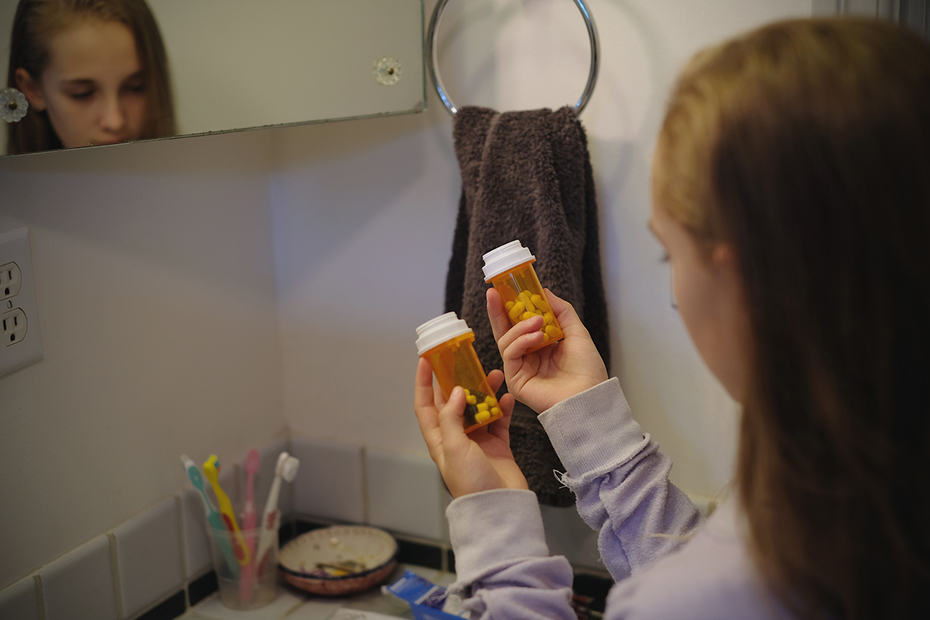
Nearly three-quarters of youth and young adults perceived using opioids without a prescription even once or twice as “high risk”.
5. THE WAY FORWARD: CONTINUING TO HELP COMBAT THE OPIOID CRISIS
Across the first two years of The Truth About Opioids campaign, Truth Initiative educated young people about the risks of misuse and helped to reduce the stigma of opioid abuse disorder. In partnership with a range of marketing and research organizations, Truth Initiative brought the conversation to young people across the country. Informed by rigorous data and research at every stage, the campaign conversation was strategically designed to shift young people’s knowledge and attitudes.
The opioid crisis, which has already taken hundreds of thousands of lives, is likely to worsen. Experts have warned that the pandemic-induced economic disruption, social isolation, and reduced access to treatment are likely to increase troubling mortality trends. According to data collected by The New York Times from local and state governments, drug deaths have risen an average of 13% in the first half of 2020 compared to the previous year.
Because of the complexity of the crisis — a result of pharmaceutical industry marketing, physician guidelines and prescribing practices, gaps in consumer knowledge, the regulatory environment, law enforcement, access to addiction treatment, broad public misunderstanding and resulting stigmatization of those with opioid use disorders, and popular culture influences — the approach to combatting it must also be multi-faceted.
The necessary solution can be envisioned as a three-legged stool. First, states and local governments must invest in emergency services, such as naloxone, to save lives in the case of overdose. Second, people dealing with addiction need access to high-quality treatment and recovery services. Third, it is essential to invest in primary prevention and education so people do not develop an addiction in the first place and that existing stigma about opioid addiction and those who are at risk and why may be mitigated. Without each leg of the stool, the nation will continue to come up short in the fight to end this epidemic.
Each leg of the stool requires regulatory and legislative reforms, organizational-level policy changes, training, research, and public education — across pharmaceutical, healthcare, law enforcement, and other sectors.
NEXT PHASE IN CAMPAIGN: INSPIRING CHANGE
While recognizing that public education prevention campaigns are just one part of a larger approach to combatting the crisis, The Truth About Opioids nonetheless presents a meaningful opportunity to contribute to the solution by influencing young people’s knowledge, attitudes and beliefs around the issue and, ultimately, impacting their behavior.
The dominant narrative around opioids is a negative one, filled with fear, anger, and loss. Behavior change research demonstrates that while fear gets attention, hope leads to action, setting the stage for next steps in opioid ad campaigns. Truth Initiative has plans to implement a further phase of The Truth About Opioids campaign that will shift from a loss-framed to a gain-framed message and illustrate how everyone can be a part of the solution to end this crisis and eliminate the stigma associated with opioid use disorder and substance use disorder. This messaging strategy has been evaluated and is ready for implementation pending funding.
Other avenues for shaping beliefs include:
- Investing in a national public education campaign: A fully-funded national public education campaign would expand the scope and reach of efforts to shift young people’s knowledge and attitudes around opioid misuse. Decentralized prevention campaigns run on local or state levels cannot achieve the level of reach, brand recognition, cost-effectiveness, and impact that a national, consolidated campaign can. Higher local media costs, combined with a hard-to reach target audience of youth and young adults make a market-by-market approach impossible to scale effectively. A Truth Initiative analysis comparing the truth anti-tobacco campaign to a decentralized model operating on a state and local level found that national campaigns are more effective and efficient for media delivery by several magnitudes, less expensive (avoiding duplicative production costs); able to access higher quality partners/talent/media opportunities; and able to generate higher investment returns on funds.
- Undoing years of pharmaceutical marketing: Opioid manufacturers have falsely marketed opioids to healthcare providers as safe and effective for long-term use, engaging physician-spokespersons to downplay the risk of addiction and developing message strategies specifically designed to overcome healthcare providers’ concerns about prescribing opioids. Of the nearly $30 billion that health companies now spend on medical marketing each year, around 68% goes to persuading doctors and other medical professionals — not consumers — of the benefits of prescription drugs.
- Counter-marketing campaign for healthcare professionals: Re-educating healthcare providers with clinical-based messaging on addiction risks and treatment, nonopioid and nonpharmaceutical treatment pain management options, and use of prescription drug monitoring programs is vital to correcting past pharmaceutical industry misinformation. This messaging should be designed to meet providers where they are via in-person sales, speakers and other materials at conventions, in-office materials, advertising in medical journals, and broader digital and print promotion.
While the opioid crisis requires a multifaceted approach to stem the tide of addiction and death, public education campaigns like The Truth About Opioids demonstrate that changing attitudes is possible, scalable, and vital. Truth Initiative’s experience in adapting its two decades of public health campaign experience provides a model for quickly and effectively responding to urgent public health crises.
APPENDIX
More in substance use
Want support quitting? Join EX Program
By clicking JOIN, you agree to the Terms, Text Message Terms and Privacy Policy.
Msg&Data rates may apply; msgs are automated.
